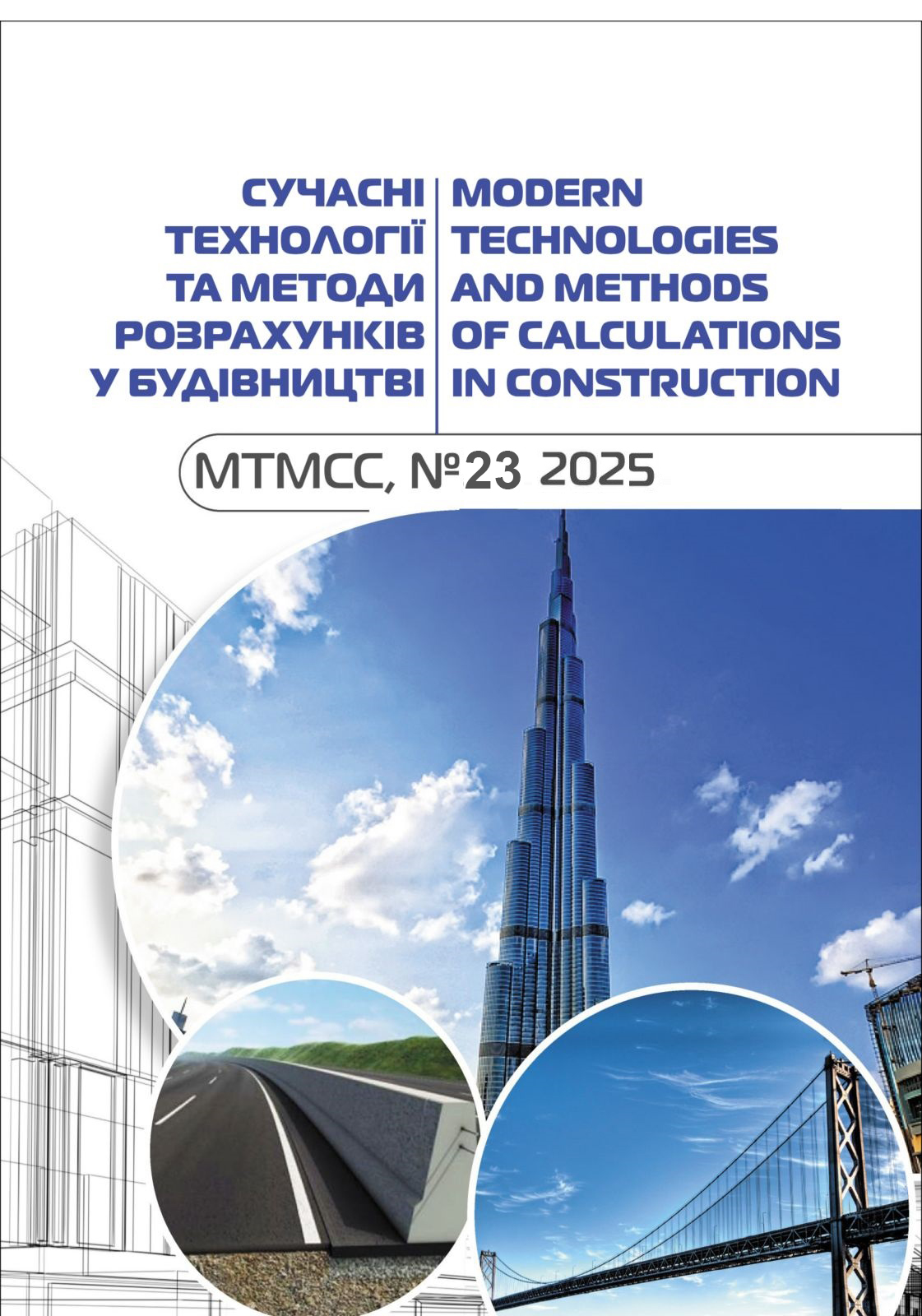Modeling the behavior of steel fiber reinforced concrete structures using the finite element method
Abstract
Abstract. The article examines the specific features of numerical modeling of steel fiber reinforced concrete (SFRC) structural elements using the finite element method (FEM). The relevance of the research is driven by the need for computer modeling and prediction of the stress-strain state of composite material structures, which is essential for the design of buildings and structures. The study analyzes approaches to incorporating steel fibers in numerical modeling, in particular, the discrete approach, where fibers are modeled as individual elements, and the homogenized approach, which is based on the averaging of the mechanical properties of the material in accordance with its composition. Examples of the implementation of these approaches in the software environments ABAQUS, ANSYS, and LIRA-FEM are provided. The accurate specification of input parameters and loading conditions has a significant impact on the reliability of the numerical simulation results.
Special attention is paid to modeling the nonlinear behavior of the material, including limit deformations, crack initiation and propagation, as well as the prediction of damage localization zones. The results of numerical modeling are analyzed and shown to be consistent with experimental (laboratory-scale) test data, particularly in terms of failure patterns, residual strength, and the energy absorption capacity of SFRC structures.
It has been determined that SFRC is characterized by increased crack resistance, alters the failure mechanism from brittle to ductile, and ensures the retention of load-bearing capacity after cracking. The finite element method is shown to be an effective tool for the quantitative assessment of the mechanical characteristics of SFRC elements, especially under combined loading conditions. The study concludes that FEM-based modeling is appropriate for use in engineering practice to justify structural solutions involving dispersed reinforcement in concrete structures.








